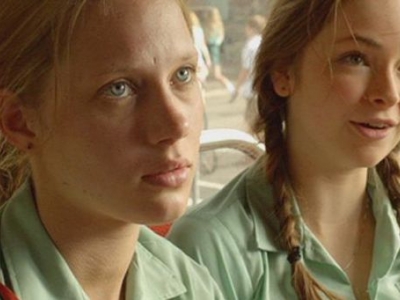
Great Southern Land: TV Review
Is our world designed or has it evolved through random chance? In this visually rich television series, Australians may ask that very question.
Australians live in such a naturally blessed country, that it would be very hard indeed to make a program showcasing our continent that doesn’t turn out to be visually beautiful. The ABC’s Great Southern Land certainly delivers, but it also steps away from a familiar way of seeing our natural world that speaks more about accident than design.
Great Southern Land is a multi-part examination of Australia hosted by scientist Professor Steve Simpson. After a 22-year stint in Oxford, Steve returned down under to become the Academic Director of the Charles Perkins Centre and an Australian Research Council Laureate Fellow in the School of Biological Sciences at the University of Sydney. He brings skills honed during his research into the “… complex networks and systems,” that allow insects to survive, and an examination of how humans and nature interact in our own land. Apart from the expected interviews with Australians engaged in all manner of occupations, the series puts a special emphasis on stepping back to understand our environment – from the air:
From here, I’ll uncover the secret patterns and rhythms of our daily lives – secrets only revealed when you’re able to look down.
As a producer my honest opinion is that Great Southern Land chose to play up the wrong part of the program. There’s actually nothing terribly new about any of the styles of aerial footage the series adopts – putting the presenter in a hot air balloon is hardly unique – and those shots don’t really fulfill the promise of ‘secrets revealed’. In fact, the aerial photography often amounts to glorious, stunning, richly coloured wallpaper, with little or no reference to the relevance of what’s being shown.
What the series should have made more fuss about is the incredible way it fuses raw data and technology. Steve merges studies on outback bushfires and the habits of Bronze Whaler sharks with satellite photography to chart the natural patterns that shape our lives. The professor uses the same to make great observations about the interconnectivity of life in Australia, from traffic patterns in the cities to the swirling air currents that wrap the continent.
However, the biggest plus for this series is the way it avoids the usual guff about an environment on the edge of survival. Rather, host Steve positively celebrates the way Australians have managed to carve out a life in a hostile continent, and steps they are taking to make it more sustainable for generations to come. By contrast, many environmental series labour over words like ‘delicate’, ‘balance’ and ‘harmony’. They reflect an approach that suggests this world is the result of a trillion random occurrences that have miraculously managed to produce a functioning ecosystem – just a tip too far one way and we’re all as ‘rooned’ as Hanrahan.
Yet, the Australia Steve describes is adaptable and robust, able to accommodate humanity’s needs and even benefit from the interaction. This is far more like the well-designed creation that is bestowed on Adam and Even by a loving Creator than the result of a billion years of chance. Likewise, the ordinary Australians that identify, harvest and preserve its riches are modeling the stewardship God decreed, even if they’re unaware of the roles they play.
Great Southern Land is a not only a good opportunity to count our blessings as Australians, it’s an occasion to remember that our God is generous and knows our needs. He never puts us in the way of trial without also giving us the means to deal with it.
Watching Great Southern Land with your kids
Great Southern Land is an easy watch for all members of the family. During the show I’d encourage parents to ponder:
- Which of the revelations about the inner working of Australian do you find most fascinating?
- Do you get the impression you’re seeing something that happened by chance, or a well-integrated design?
- If the world is a precision instrument as complicated but accurate as a Swiss watch, does that suggest there’s a watchmaker?
For more articles from Growing Faith, subscribe to our monthly e-newsletter.
To hear about the latest books and resources from Youthworks Media, subscribe here.







